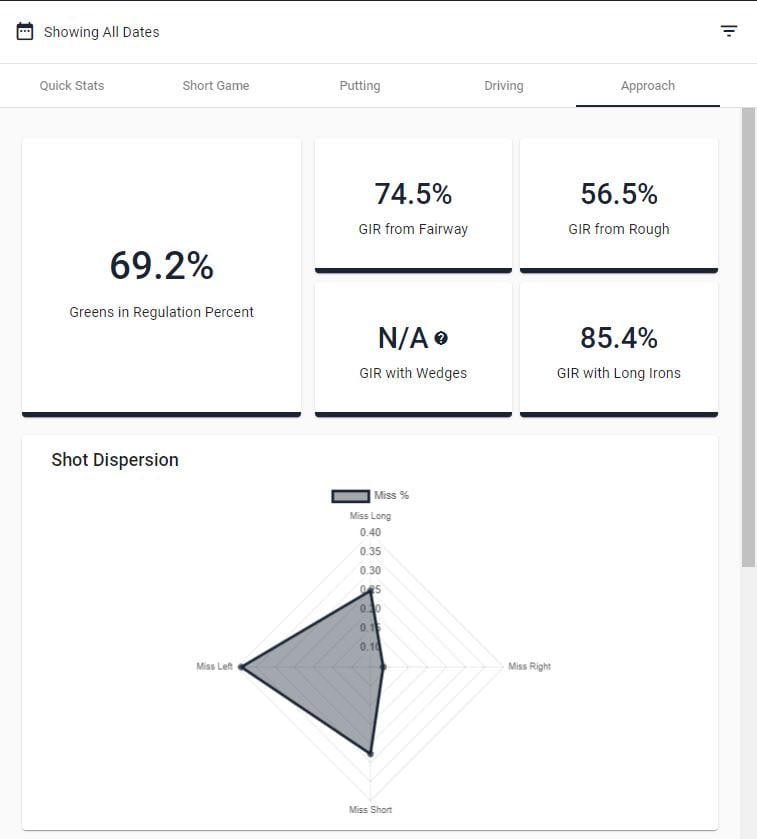
Golfers who consistently score over 100 in their games are aiming for the top. To reach this goal, golfers have to examine every aspect of their game to determine where they are wasting their strokes. Basic accounting can assist with this analysis. An example of this is a golfer who can determine how many strokes they're wasting due to poor alignment.
High-lofted drivers can be easier to access the air.
Low-lofted drivers are used by many pros and amateurs. However, players who want to break 100 may benefit from a more lofted model. A higher-lofted driver will give you more backspin and less movement, which will allow you to hit your ball further and longer. The shaft is the most critical part of a driver as it determines the driver's flight and consistency.

Slow-swinging golfers find it easier to hit the air with high-lofted golfers. It is easier to get into the air with high-lofted drivers than with low-lofted. A high-lofted driver may be better if your goal is to break 100 in shorter time. If you have a low-apex driver, a lower-lofted one may be better.
Alignment plays a major role in the success of wayward shots
Malalignment in the body or club face is one of many causes of bad shots in golf. This can lead to issues with the swing path and swing plane. If this is not fixed, it's possible for the golfer to make bad shots. You can fix the problem by aligning your body.
To improve your alignment, the first step is to identify your target line. This will make it easier for you to hit a straight shot. Once you have determined your target line, align yourself with your hips. If you're hitting a shot with a left-handed hand, make sure you turn your left foot out before swinging. A good alignment will save you many shots over the course of a round.
Golfers who practice swinging can increase their chances of breaking 100.
Practice is an important part in your game. But it's more than just hitting the ball straight. You need to use finesse and control your swing. This involves breaking up long approach shots and not allowing the ball to fly. This will make it less likely that you hit slices, bogeys and bladed shots. You'll soon be able to break 100 by focusing on these three aspects.

One of the most important things that you can do to improve your chances of breaking 100 in golf is to focus on the green. You should aim to land your ball as close as possible to the hole. This will allow you to get consistent bounce, which can be crucial for breaking 100. You can also practice your pitching shot wedge shot to increase your chances at breaking 100 in golf. This is a critical part of improving your golf swing.
FAQ
Can I learn how golf is played?
Yes. There are many schools that offer instruction in golf. You will need new equipment, such as a set or clubs.
How often should I play the game of golf?
It depends on how many hours you have. Most people recommend at least two sessions per week.
You should aim to play at least four times a week if your goal is to become an expert player.
Is golfing dangerous?
Even though golf is not considered dangerous, it can inflict injury. One example is a broken arm that you could sustain while swinging a clubs.
But most injuries occur when you fall off your golf car.
What is a handicap and how can it be avoided?
When playing golf, you may find yourself having trouble keeping up with others. You might also find yourself struggling to score well because you are too slow or too fast. These problems can be overcome by hiring a caddy, who will help carry your bag.
But, beginners should make use of the services offered at your local golf course. They will calculate your handicap based on age, gender, height, weight, strength, and skill level.
Your handicap will then be used as a reference point when calculating your score. Your handicap will tell you which group you belong in. This will help you compete better against other players with similar abilities.
What are the different types?
There are many different types of courses for golf. Some are designed specifically for beginners, while others cater to experienced players.
Some golf courses can be found near lakes, rivers and mountains. Others are situated in urban areas. You can find a variety of golf courses from public parks to private estates.
What does a perfect golf swing look and feel like?
Balance is key to a smooth golf swing. Balance refers to being steady throughout all movement. You should keep your arms relaxed, but still strong, when swinging the golf clubs. Your shoulders should be straight to the target line.
Keep your head straight during the backswing, and then follow through. Swing smooth and without jerking your wrists. Don't force the ball. Instead, focus on smooth, fluid movements.
What is a par?
Par refers to the number of strokes needed to complete a hole. The sum of all the individual scores is used to calculate the score.
You can play 18 holes during a round. Each hole has its own rating. The hole with the highest rating is "par 3". It is located three strokes from hole. The lowest rated hole is called "par 5''. It is five strokes from the hole.
Statistics
- In the United States, women made up 25 percent of golfers in 2021, which was up from 19 percent in 2011, and junior female golfers account for 35 percent or 1.1 million golfers.[50] (en.wikipedia.org)
- Professional golfers typically make between 60% and 70% of greens in regulation. (en.wikipedia.org)
- Buying a set of Titleist or Taylor-Made irons for nearly $1,000 is simply not necessary and likely a waste of money. (golficity.com)
- Professional golfers typically make between 60% and 70% of greens in regulation. (en.wikipedia.org)
External Links
How To
How To Hit A Perfect Bunker Shot
A bunkershot is a type if golf shot where you aim your ball at a specific spot (the hole) in order to ensure that the ball doesn't bounce off of the surface. You can take advantage of the slope on the green to do this. The goal is to guide the ball towards the hole in the shortest path.
Playing golf requires you to determine the best line for reaching your target. You have to consider several factors such as how much distance away you are from the target, what kind of terrain you're hitting through, whether the ball needs to bounce off the ground or fly straight, and even weather conditions.
You must understand the physics of bunker shots in order to make them perfect. First, decide if you're going uphill and downhill. You will need a drawing club if you are going uphill. You should swing with a fade when you're looking downhill. Next, determine the speed at which your body can move to stop the ball hitting the green. You can do this by measuring the angle between the ball and the direction you're traveling. You will also need to determine the size of the bunker that you are aiming for.
Once you've figured these things out, you can start swinging. Swing hard enough to let the ball go past the face of the club head but slow enough to keep it from bouncing off the green, just like you would when making any other shot. Once you have the speed and trajectory you want, you can start to approach. Slowly approach and touch the ball so that you can see the landing spot. After you have taken one last look at your ball, release it. If all goes according to plan you will have a flawless bunker shot.